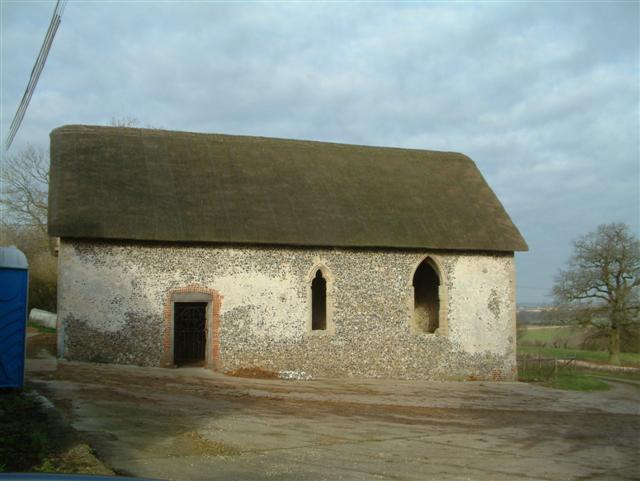St Martin's Chapel, Chisbury on:
[Wikipedia]
[Google]
[Amazon]
 St Martin's Chapel, Chisbury is a mediaeval former chapel next to the
St Martin's Chapel, Chisbury is a mediaeval former chapel next to the
 St Martin's Chapel, Chisbury is a mediaeval former chapel next to the
St Martin's Chapel, Chisbury is a mediaeval former chapel next to the manor house
A manor house was historically the main residence of the lord of the manor. The house formed the administrative centre of a manor in the European feudal system; within its great hall were held the lord's manorial courts, communal meals w ...
in the hamlet of Chisbury
Chisbury is a hamlet and prehistoric hill fort in the civil parish of Little Bedwyn in Wiltshire, England. Chisbury is about west of Hungerford and about south-east of Marlborough.
History
At above sea level, Chisbury hillfort is the highes ...
, in the east of Wiltshire
Wiltshire (; abbreviated Wilts) is a historic and ceremonial county in South West England with an area of . It is landlocked and borders the counties of Dorset to the southwest, Somerset to the west, Hampshire to the southeast, Gloucestershire ...
, England.
St Martin's was built in the early part of the 13th century, on the edge of Chisbury Camp, an Iron Age
The Iron Age is the final epoch of the three-age division of the prehistory and protohistory of humanity. It was preceded by the Stone Age ( Paleolithic, Mesolithic, Neolithic) and the Bronze Age ( Chalcolithic). The concept has been mostl ...
hillfort
A hillfort is a type of earthwork used as a fortified refuge or defended settlement, located to exploit a rise in elevation for defensive advantage. They are typically European and of the Bronze Age or Iron Age. Some were used in the post-Roma ...
. There are written records of it from 1246 onwards and its surviving architecture is contemporary with that period. The walls are faced with flint. The windows have the remains of good-quality Decorated Gothic
English Gothic is an architectural style that flourished from the late 12th until the mid-17th century. The style was most prominently used in the construction of cathedrals and churches. Gothic architecture's defining features are pointed ar ...
tracery that suggests they were added in the latter part of the 13th century.
Because Chisbury manor was linked to Froxfield
Froxfield is a village and civil parish in the English county of Wiltshire. The parish is on the Wiltshire-West Berkshire border, and the village lies on the A4 national route about west of Hungerford and east of Marlborough.
Froxfield vil ...
church, the rector of Froxfield received the tithes
A tithe (; from Old English: ''teogoþa'' "tenth") is a one-tenth part of something, paid as a contribution to a religious organization or compulsory tax to government. Today, tithes are normally voluntary and paid in cash or cheques or more ...
from Chisbury; sometime before 1246 he assigned this income to St Denys Priory, Southampton. However, Chisbury was within Great Bedwyn
Great Bedwyn is a village and civil parish in east Wiltshire, England. The village is on the River Dun about southwest of Hungerford, southeast of Swindon and southeast of Marlborough.
The Kennet and Avon Canal and the Reading to Taunton ...
parish, and from 1247 the chapel was treated as dependent on St Mary's church at Great Bedwyn, although the priory continued to receive the tithes and appoint chaplains. Between 1496 and 1518 St. Martin's lacked a priest, but it was served again from then until 1547. Thereafter St. Martin's lapsed from use for worship and was re-used as a barn. It was re-roofed with thatch
Thatching is the craft of building a roof with dry vegetation such as straw, water reed, sedge (''Cladium mariscus''), rushes, heather, or palm branches, layering the vegetation so as to shed water away from the inner roof. Since the bulk of ...
in the 19th century.
The hillfort, including the chapel, was designated as a scheduled ancient monument
In the United Kingdom, a scheduled monument is a nationally important archaeological site or historic building, given protection against unauthorised change.
The various pieces of legislation that legally protect heritage assets from damage and d ...
in 1925. The chapel is in the guardianship of English Heritage
English Heritage (officially the English Heritage Trust) is a charity that manages over 400 historic monuments, buildings and places. These include prehistoric sites, medieval castles, Roman forts and country houses.
The charity states that i ...
.
References
{{Coord, 51.3901, -1.5986, display=title, type:landmark_region:GB_WIL English Heritage sites in Wiltshire Former churches in Wiltshire Scheduled monuments in Wiltshire